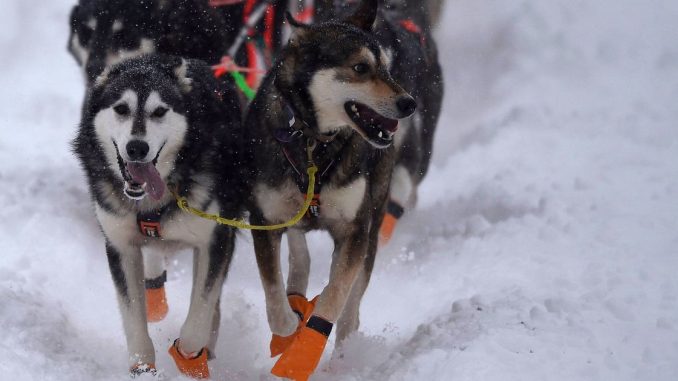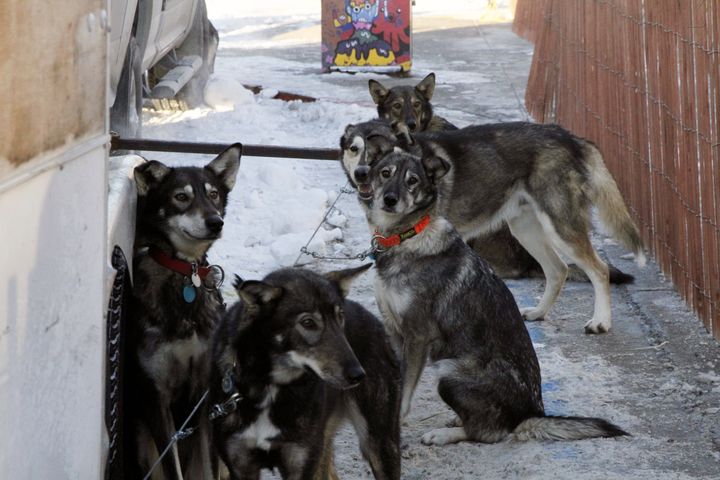
ANCHORAGE, Alaska — For the past five years, Alaska’s annual Iditarod sled dog race has gone off mostly free of controversy, as teams of dogs and their mushers braved the elements in the 1,000-mile (1,609-kilometer) test of endurance across the frozen wilderness.
This year the deaths of three dogs during the race — and five more during training — have refocused attention on the darker side of Alaska’s state sport and raised questions about the ethics of asking animals to pull a heavy sled for hundreds of miles in subzero temperatures.
Dog mushing has a long and storied tradition in Alaska that harkens back to its Native peoples and frontier spirit, however, and while there are calls to end the race forever, supporters say the Iditarod should remain as a celebration and reminder of a time not so long ago when the main way to travel was by sled.
Archeological evidence suggests dogs were used to pull sleds long before Alaska Natives had contact with other cultures, said Bill Schneider, the former president of the Alaska Historical Society, retired archivist for the University of Alaska Fairbanks and a recreational musher at age 78. Alaska Natives long depended on sled dog teams to move their supplies as they migrated seasonally to where the resources were, fishing or hunting or trapping.
It wasn’t until the early 1970s that the Iditarod was established with the help of Joe Redington Sr., who saw it as a way to save both sled dog culture and the Alaskan husky breed, which were being eclipsed by snowmobiles. Each March dozens of sled teams — many with 16 dogs in harness — make the arduous journey from the city of Anchorage to Nome, on the state’s far west coast.
The three dogs that collapsed and died during the race this year were all part of different teams. One perished just 200 feet (60 meters) from entering a village. Life-saving efforts failed in all three cases, and necropsies have not provided causes of deaths. More tests will be conducted, officials said.
All three mushers withdrew from the competition, pursuant to race rules. They were fairly inexperienced, with two rookies and one in his second race.

People for the Ethical Treatment of Animals and another animal rights group, Humane Mushing, say more than 100 dogs have died over the 51-year history of the Iditarod, which has always declined to provide a number.
Melanie Johnson, a PETA senior manager, said the deaths show that mushers must stop putting their dogs in danger and the race needs to end.
“These are not super dogs; they’re not indestructible pieces of sporting equipment,” she said.
“They are just like any other dog, and all they want is to live and enjoy love and companionship,” Johnson added. “But the Iditarod continues to push them beyond their capabilities, and as a result, dogs continue to suffer and die.”
Iditarod officials did not respond to several messages from The Associated Press seeking comment. CEO Rob Urbach has rejected PETA’s stance on the race in the past as “inflammatory and grossly inaccurate,” while acknowledging that the criticism creates a difficult dynamic for them. Iditarod organizers are trying to change the narrative, he said, and continuing to promote dog wellness, nutrition, training and breeding.
After the winner came in Tuesday in Nome, Urbach told the Anchorage Daily News that the dog fatalities were “obviously very disheartening for our community.” Officials are waiting on full necropsy reports and will act based upon the results, he added.
“If we can learn anything, we will,” Urbach said. “When we get all the reports back, we’ll see if there’s anything. I can assure you if we do, we’ll apply those learnings.”


Be the first to comment